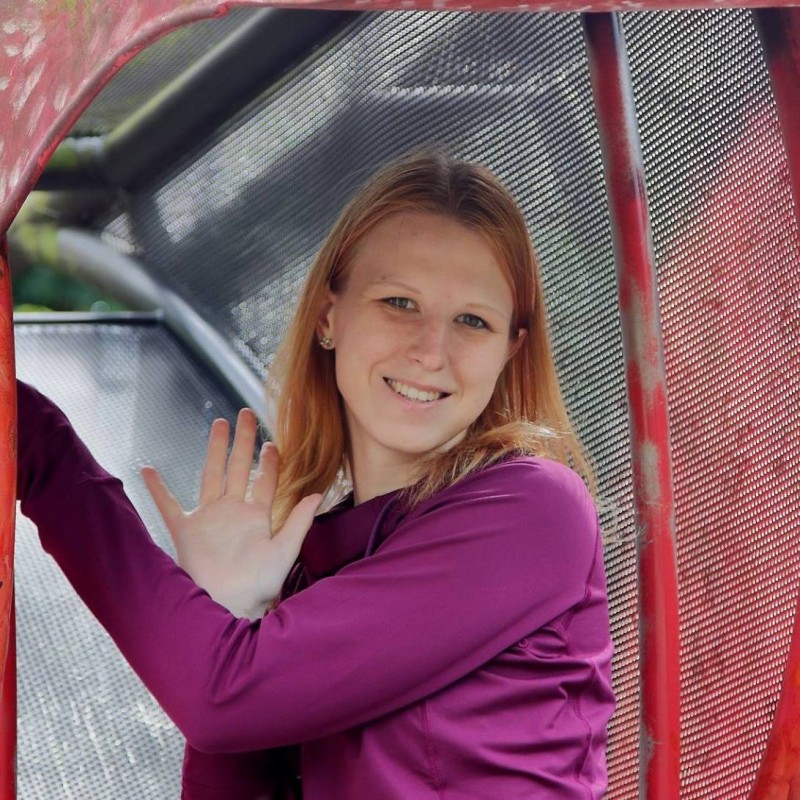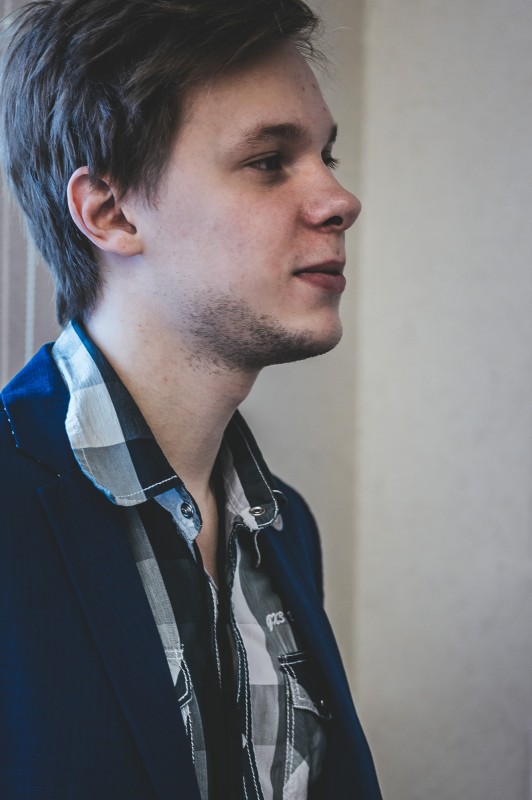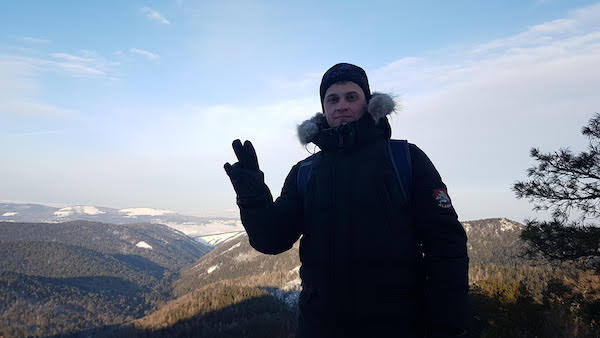Skoltech PhD students Elena Romadina and Sergey Marshenya have been honored with a prestigious scholarship from Haldor Topsoe, a global leader in heterogeneous catalysis. A special prize was awarded to another Skoltech PhD student, Nikita Luchinin.
Elena Romadina received a scholarship for the project “Design of new materials for organic redox flow batteries”, and Sergey Marshenya for the project “Development of electrodes and electrolytes for all-solid-state high-voltage batteries”. Nikita Luchinin was awarded the prize in the research excellence, scientific novelty, significance for the theory of catalysis, and practical impact categories.
Established by the company founder, Dr. Haldor Topsoe, over 20 years ago, the Haldor Topsoe PhD Scholarship Program supports young scientists conducting research in heterogeneous catalysis and associated fields having relation to Topsoe’s mainstream activity.
We caught up with the winners to find out about the focus and practical impact of their research and their feelings about the award.
Elena Romadina
3rd year PhD student, Materials Science and Engineering program, Skoltech Center for Energy Science and Technology (CEST)

− In my project, I study and develop new materials for Redox Flow Batteries (RFB) that are believed to hold much promise for large-scale energy storage applications, in particular, in combination with wind or solar power plants. In contrast to traditional lithium batteries, the RFB cathode and anode materials are dissolved in liquid electrolyte and stored in separate containers and not inside the electrochemical cell. This battery design is the main advantage of the RFB which are easily scalable to create a high-capacity battery.
Although RFB research has been going on since the 1970s, scientists and industries have been focusing instead on vanadium batteries and other inorganic systems. Nowadays, organic batteries are believed to outperform their inorganic counterparts in many respects, such as high voltage (up to 5 V versus 1.6 V), solubility of active compounds, sustainability, and attractive cost. In our project, we have presented a new class of cathode materials based on triarylamines that boast high solubility and stability as well as reversibility of redox reactions and excellent cycling performance in laboratory prototypes of organic batteries.
I am honored to have received a scholarship from Haldor Topsoe. I am proud that my findings have garnered interest and respect from both the scientific community and the industries. There are hardly any teams doing RFB research in Russia, which is a pity, since this technology is essential for the advancement of renewable energy. I hope that the recognition of my research by Haldor Topsoe will motivate PhD students and researchers to look closely at this technology and place renewable energy in the focus of their research.
Sergey Marshenya
2ndyear PhD student, Materials Science and Engineering program, Skoltech Center for Energy Science and Technology (CEST)
 − My research is concerned with materials for solid-state lithium-ion batteries, the next generation of batteries that are believed to be safer and more durable than their existing counterparts. Solid-state metal-ion batteries constitute the future of electric vehicles, as evidenced by the fact that industry giants like Toyota and Volkswagen are extensively investing in this technology, which still poses a host of challenges despite the growing interest from both scientists and the industries. My project focuses on solid-state electrolytes and spinel structured cathode materials, with particular emphasis on a new family of materials that hold much promise as electrolytes.
− My research is concerned with materials for solid-state lithium-ion batteries, the next generation of batteries that are believed to be safer and more durable than their existing counterparts. Solid-state metal-ion batteries constitute the future of electric vehicles, as evidenced by the fact that industry giants like Toyota and Volkswagen are extensively investing in this technology, which still poses a host of challenges despite the growing interest from both scientists and the industries. My project focuses on solid-state electrolytes and spinel structured cathode materials, with particular emphasis on a new family of materials that hold much promise as electrolytes.
It takes an all-round approach to create solid-state lithium-ion batteries. One should know how to obtain a specific material for the electrodes or the electrolyte, what processes take place at the electrode-electrolyte interface, how to make sure these parts are in tight contact, what materials to use as a polymer binder, and much more. What I find the most exciting about this work is that I have to always keep the bigger picture in mind.
A large part of the work is already completed: we have tested a method used to produce a spinel structure cathode material and obtained solid-state lithium and sodium electrolytes which open the door to a new type of previously unpublished electrolyte materials. Yet, there is a lot more to learn about their structure and properties.
When you do something that no one has done before, you have to make a lot of experiments before you get something worthwhile. It may be really hard not to feel discouraged and pursue your goals when you do not get what you expect after the twentieth, thirtieth or fiftieth test. The Haldor Topsoe scholarship is a strong encouragement and another reminder that what I do means a lot and is appreciated by an international jury of scientists and industrial experts.
Nikita Luchinin
1styear PhD student, Materials Science and Engineering program, Skoltech Center for Energy Science and Technology (CEST)

− For the past six years, I have been focusing on hydrothermal and solvothermal synthesis of inorganic materials for metal-ion batteries as well as new and modified versions of the existing methods for creating composite electrode materials for metal-ion batteries. A large part of my research was dedicated to novel synthesis methods and inorganic compounds. In particular, I developed hydrothermal methods for obtaining phosphates and fluoride phosphates of transition metals in such varieties of high practical value as tavorite, NVPF, КТP, and α-CrPO4, and studied the electrochemical properties of some new compounds, including K(NH4)TiPO4F, α-TiPO4, NaVPO4F, and others. I have developed a carbon composites manufacturing method based on polymer pyrolysis which is extensively used and helps enhance the power performance of electrode materials as compared to other techniques.
Dealing with non-routine research and engineering tasks, I have gained better understanding of the principles of materials science as regards new functional materials for modern energy. I believe that in order to break new ground in the field, you should get the hang of all the research and development stages, from chemical synthesis to electrochemical measurements.
Currently, my research focus is on the electrochemical properties of metal alloys to be used as anode materials in sodium-ion batteries. I will have to address a wealth of scientific and engineering challenges in order to obtain new functional materials that will outperform their existing counterparts.
New technical solutions, such as the production of catalysts or electrode materials for metal-ion batteries, are powerful drivers of progress in any area of science and engineering. I am delighted that my commitment to innovation was fully shared and supported by Haldor Topsoe and the jury. Winning a scholarship from one of the world’s largest research and production companies means that I am on the right track.
Contact information:
Skoltech Communications
+7 (495) 280 14 81
